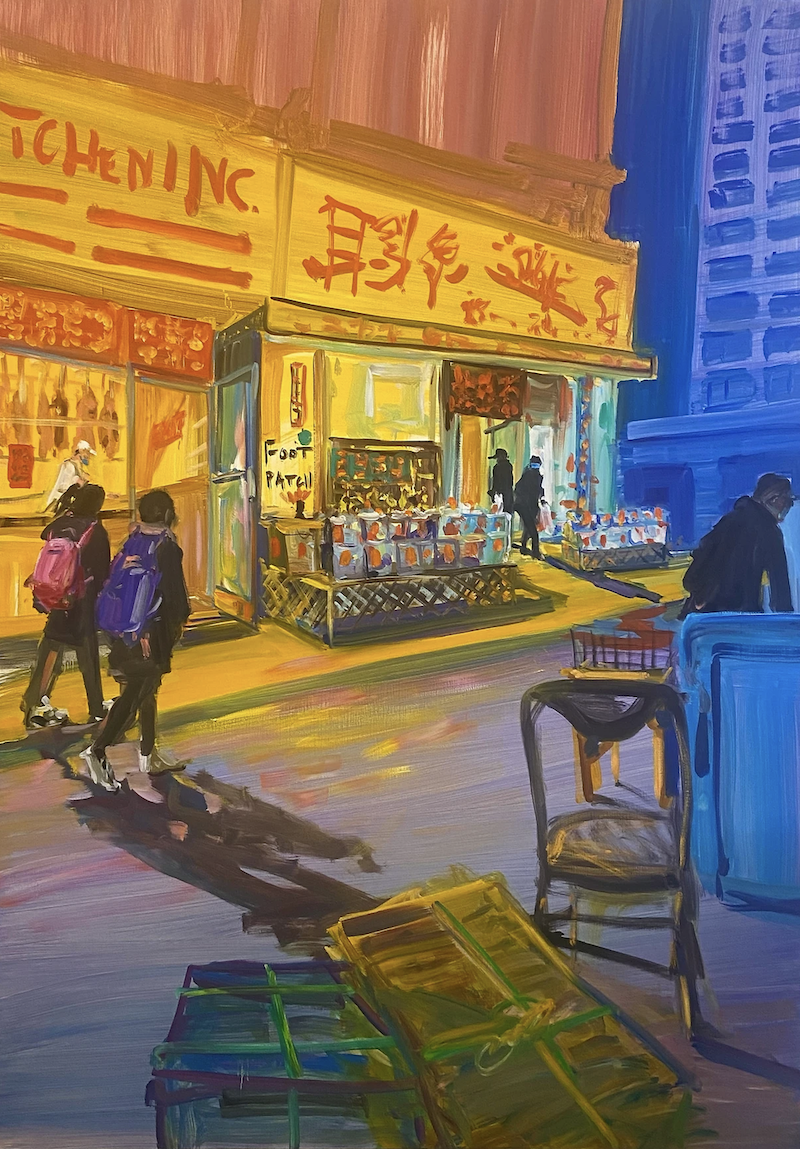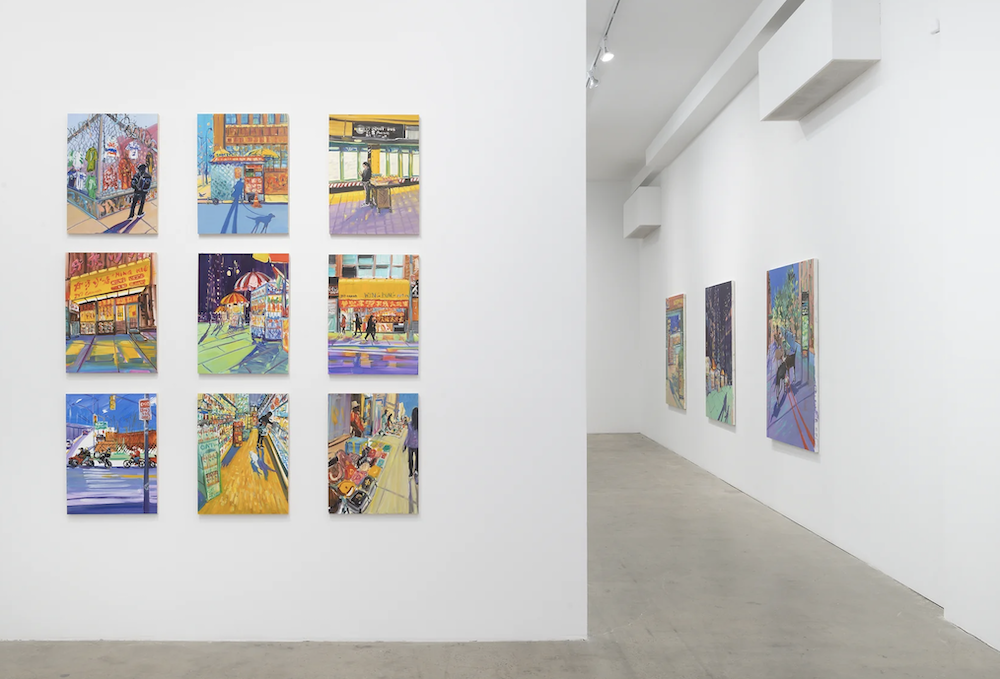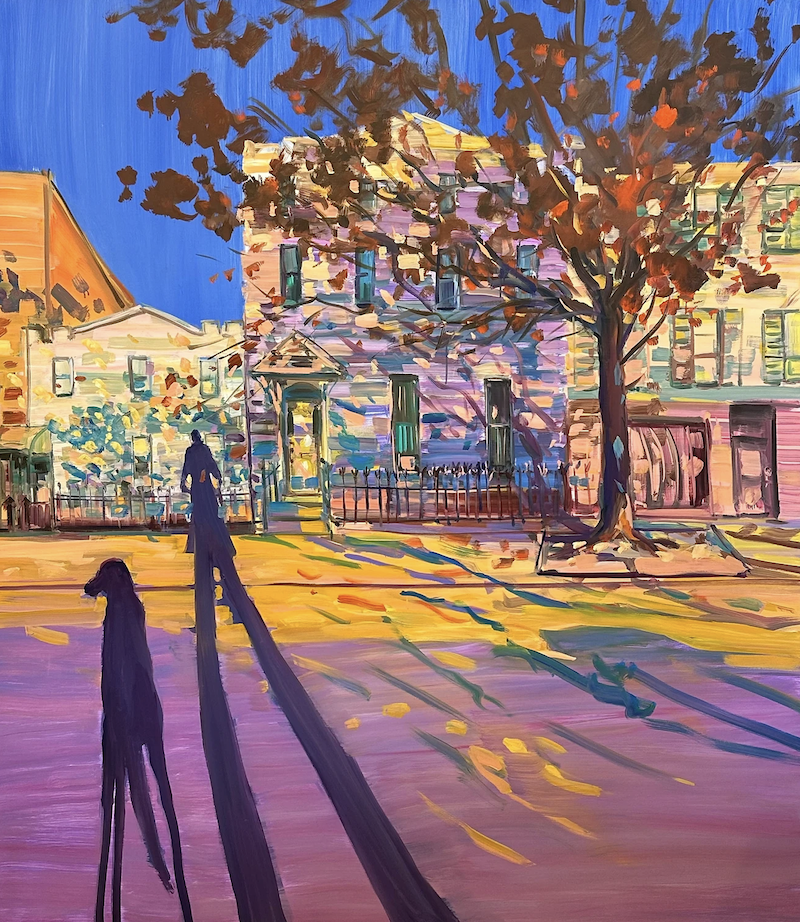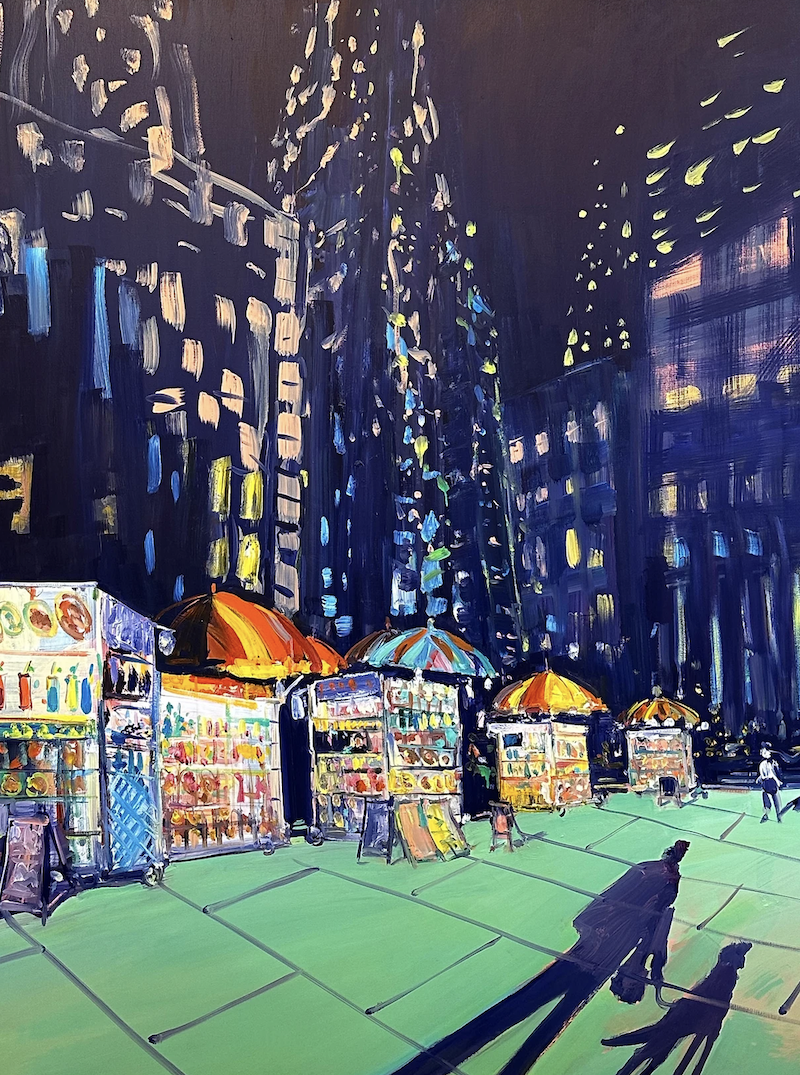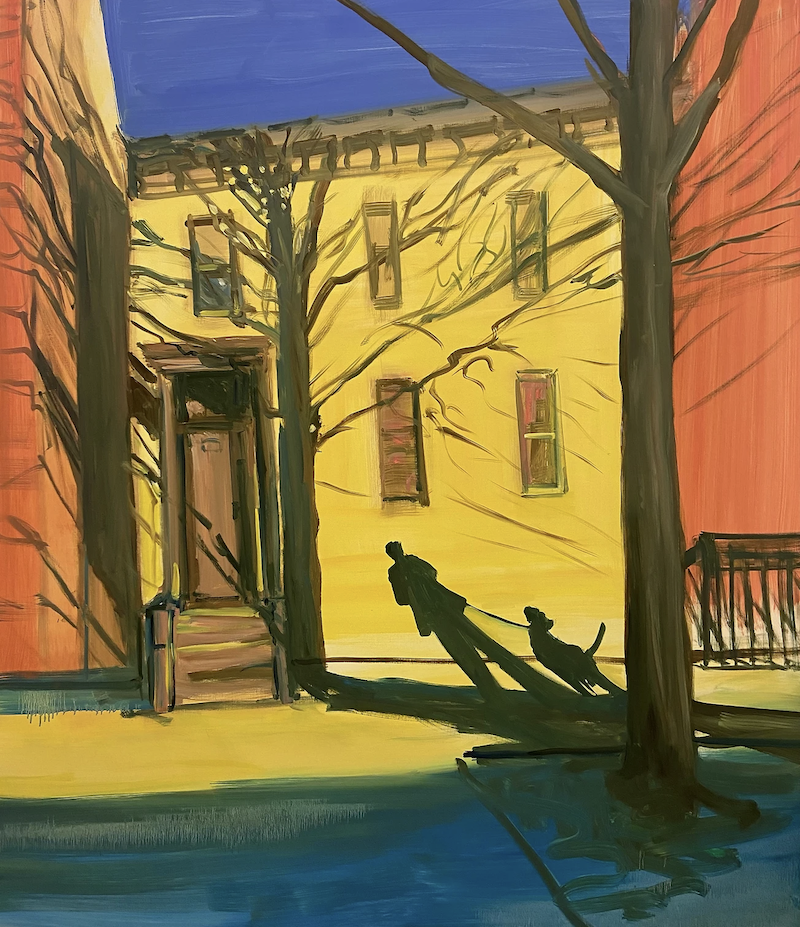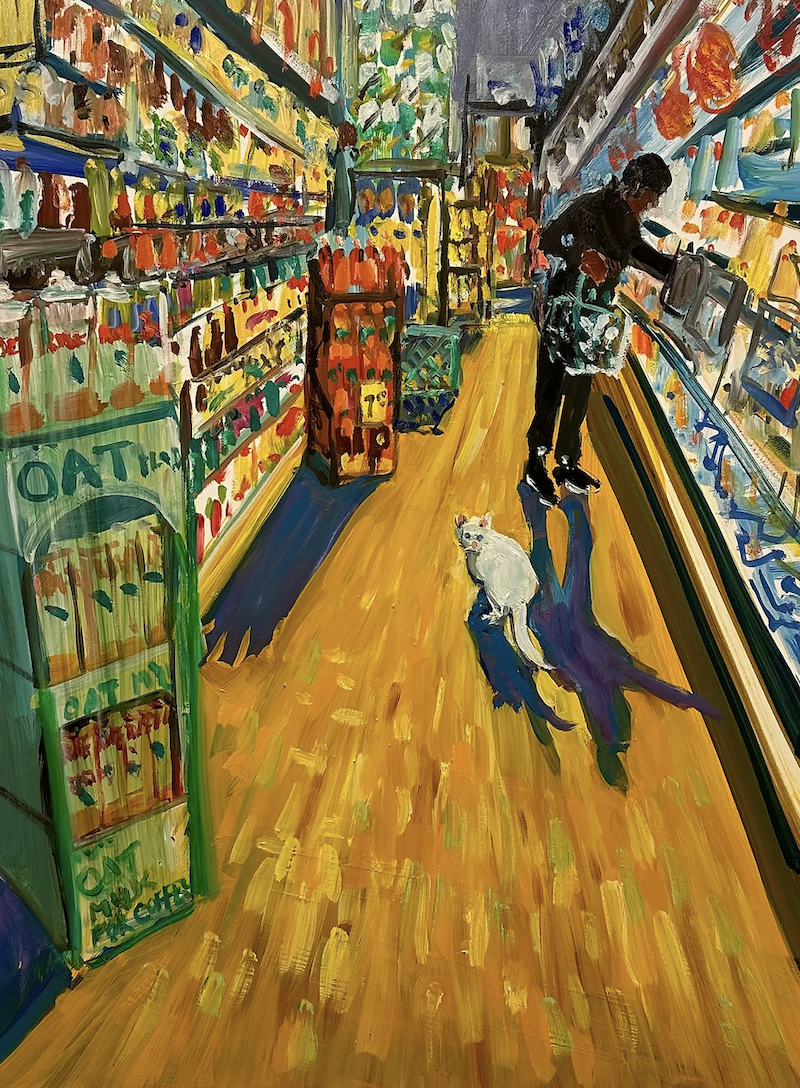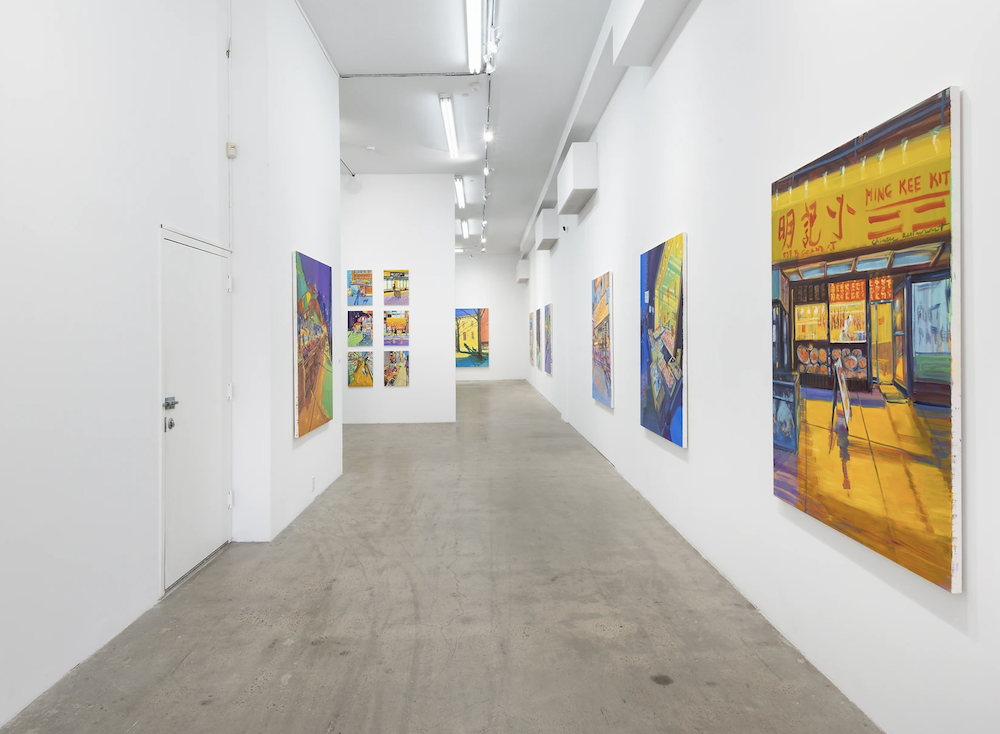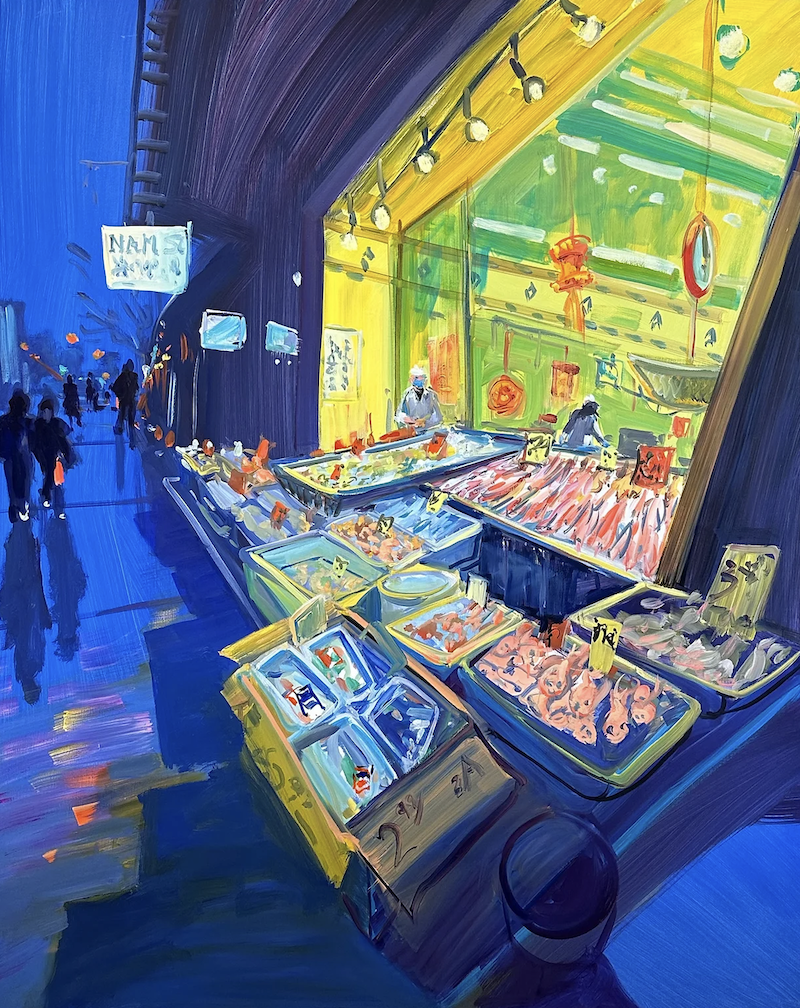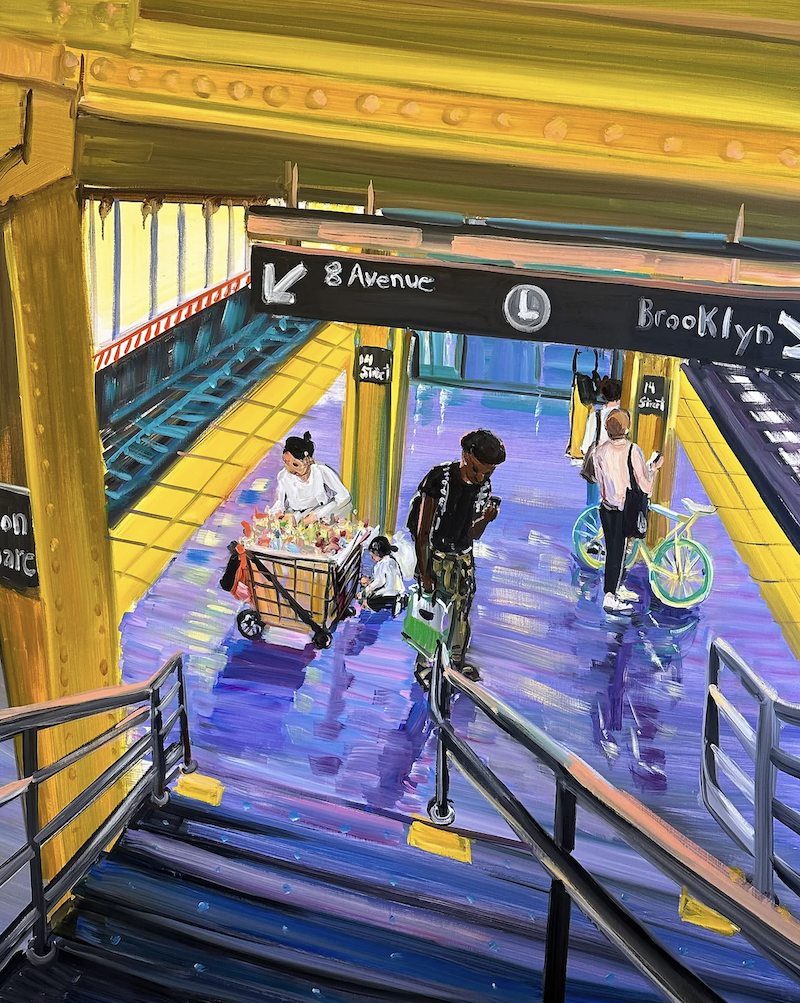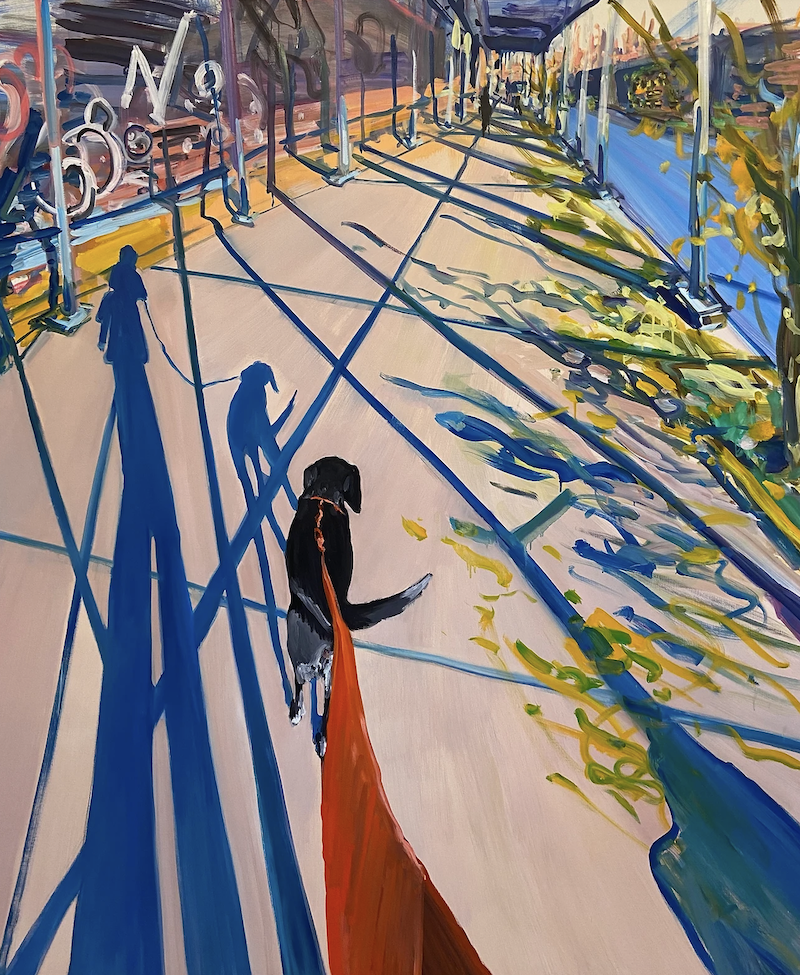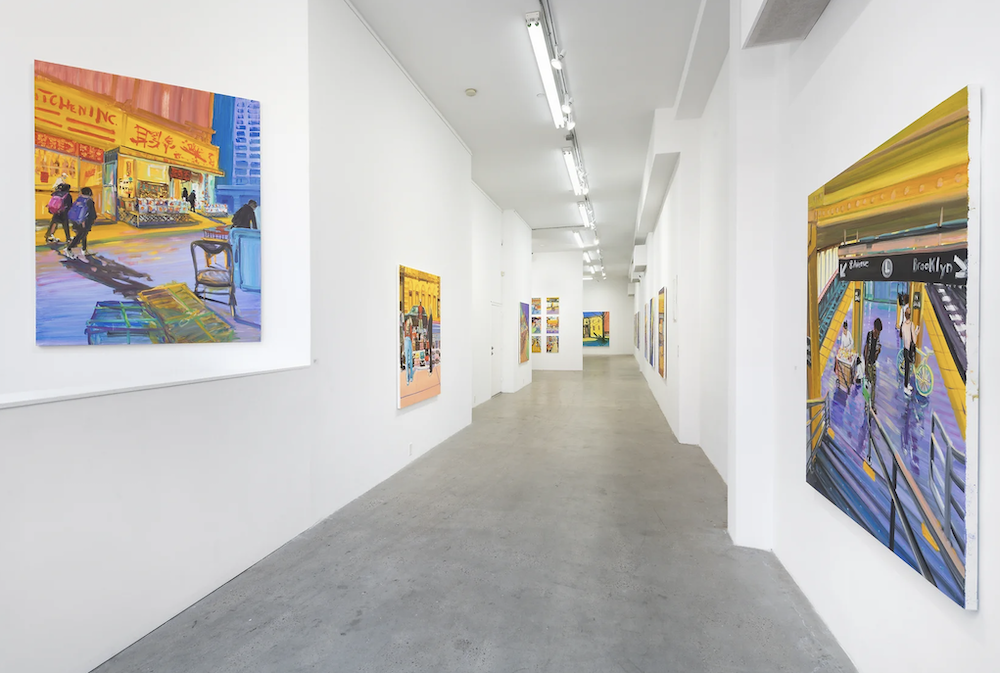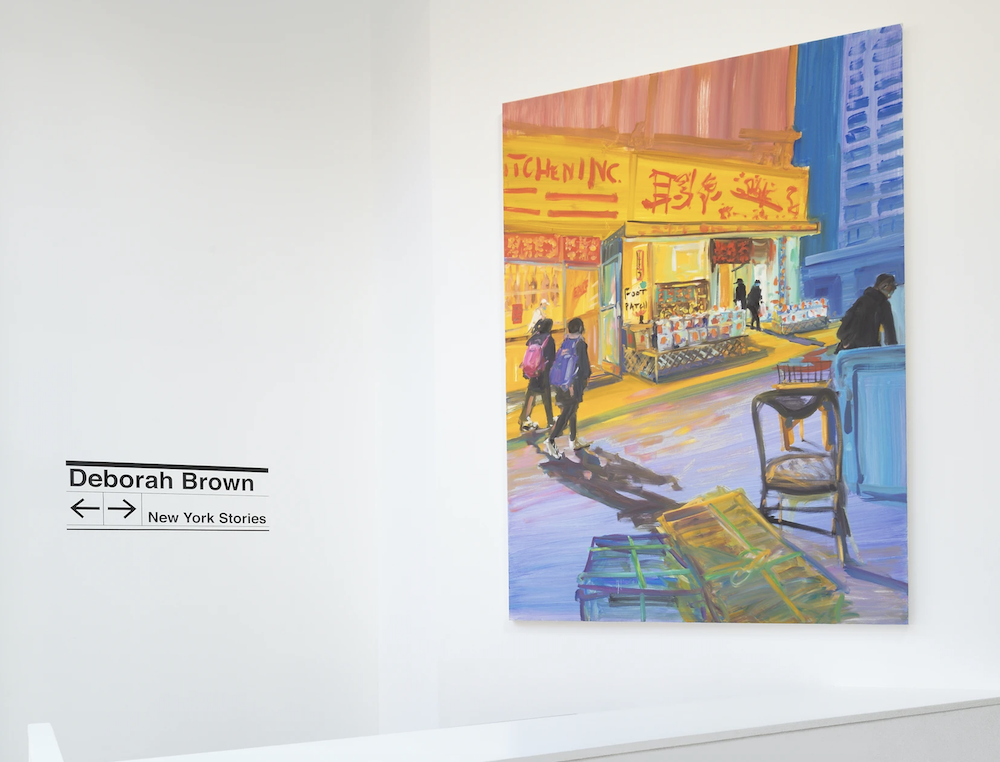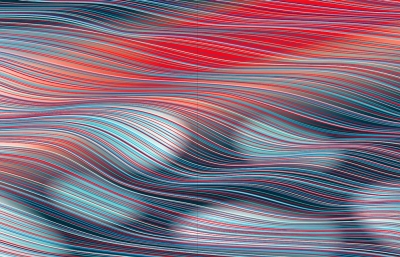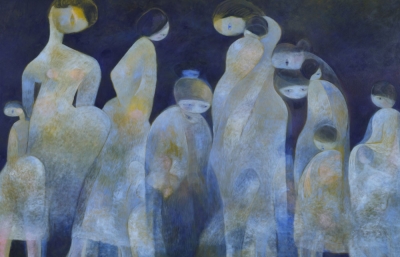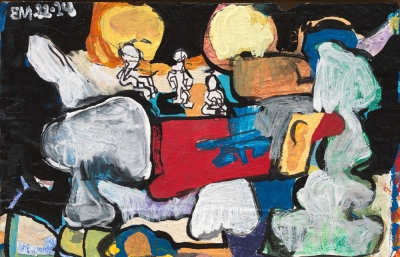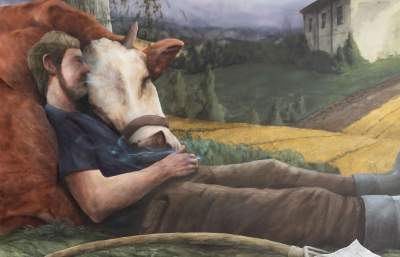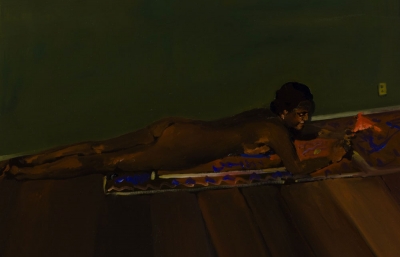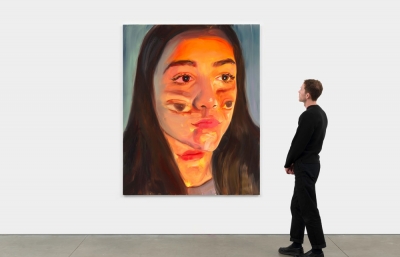Deborah Brown’s kaleidoscopic spotlight on NYC’s neighborhoods and micro-communities came as a surprise for the artist herself, a New Yorker of forty-two years who rediscovered her own city during the pandemic. From Brown’s shadow on the deserted streets near her studio in East Williamsburg, which she then wandered around with her long-time canine companion, Trout, to the later revived sidewalks of Bushwick and Tribeca, where street vendors lure locals and tourists with their colorful wares of imported merchandize, to Chinatown’s sensory overload of fishmonger’s vitrines, makeshift stalls, red-and-yellow signs and glowing restaurant lights, to Ecuadorian fruit sellers on the L train platform at Union Square, to starchitect Frank Gehry’s skyscraper foregrounded by street food carts, to Brooklyn stray cats to Upper East Side dog walkers – the sights, sounds and characters of the grand metropolis invigorated Brown’s practice, infusing it with an electrifyingly exciting palette and a bravado brushwork that is fresh and spontaneous, but only achievable with decades-long experience.
Shifting an individual’s gaze from her own shadow to the surfaces and objects it traversed, to the people that animate those objects, Brown discovered a universe that is New York City. A place that can make one feel lonely but never alone, that is both contemporary and arcane, the center of the world and its backwaters, globalized and painfully local, a window to today and a portal to eternity, excruciating and energizing, ever evolving and beaconing new waves of “the tired, poor, huddled masses” with its supermarket and bodega shelves, street signage and unoriginal consumer goods that can be purchased anywhere else, including the internet, but, the same way as they were in medieval markets, seem so much more appealing to buy on the dusty streets.
Brown offers a place in art history to the individuals, communities and spaces in New York that are often overlooked or taken for granted by thousands of passersby. Seen as just purveyors of the goods they provide, flickering shadows, who display, tout, parcel and haggle, then disappear from view, they are now permanently fixed and illuminated, as was the case with Paris of the Impressionists, by the artist’s emotion and the fleeting changes of NYC’s light.



